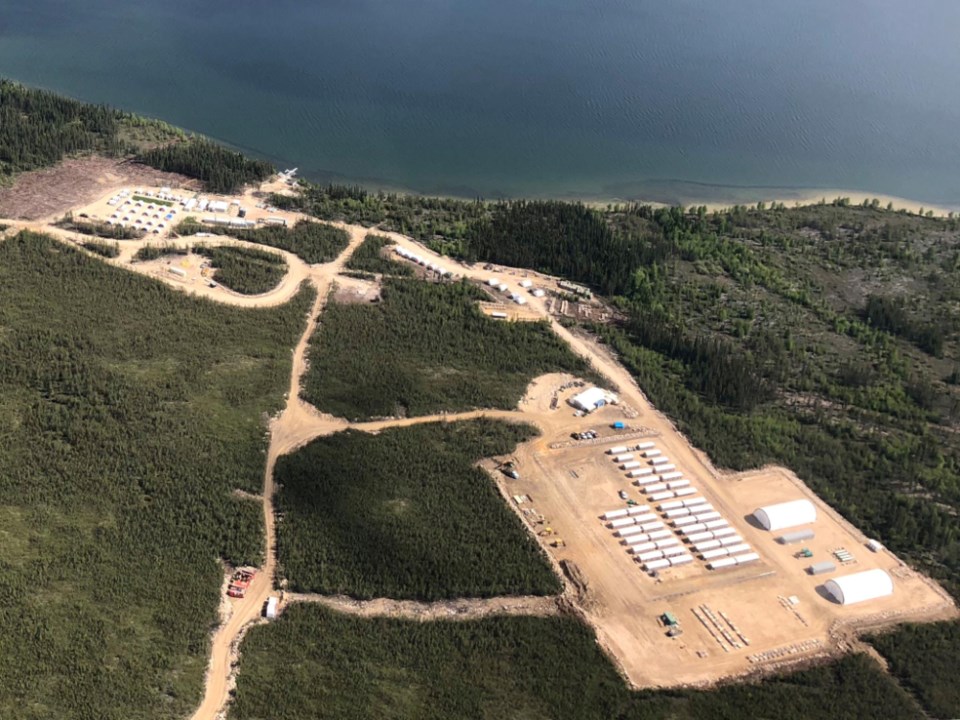At the beginning of this year, uranium — considered a critical mineral by Canada and the U.S. — broke US$100 per pound for the first time since 2007.
Now that nuclear energy is enjoying something of a renaissance, and imports of uranium from Russia have been banned in the U.S., uranium may be in for a bull market run, which could be very good for Vancouver’s NexGen Energy (TSX:NXE).
NexGen is getting ready to build a new uranium mine in Saskatchewan. Its Rook I project 130 kilometres north of La Loche, Saskatchewan received a provincial environmental certificate in November 2023 and is in the later stages of a federal review by the Canadian Nuclear Safety Commission.
The company is hoping to get a federal environmental certificate by the end of this year or early in 2025, said NexGen chief commercial officer Travis McPherson.
The Rook I project would be a high-grade underground uranium mine with a capital cost of about $2 billion. It has the support of three Dene and one Metis nations in the region.
When the deposit was first identified more than a decade ago, the mine NexGen proposed was simply to make up for an expected loss of production at other mines, which will eventually become exhausted.
“This is needed to basically supplement uranium supply that’s coming offline both in Canada and from around the world,” McPherson said.
Interest in the power of nuclear energy has been renewed as policymakers realize the critical role nuclear will play in a decarbonizing world. More uranium mines may be needed, and Saskatchewan is one of the top-producing uranium regions in the world.
NexGen noted that some 60 nuclear reactors are under construction worldwide, and that an additional 110 are planned.
Saskatchewan is the second-largest producer of uranium globally, behind Kazakhstan, and is noted for its high grades.
“Canada’s the only place in the world that you get these really high-grade, high-quality uranium projects,” McPherson said. “There’s nowhere else on the planet that comes close to it.”
Saskatchewan mines produced 13 per cent of the world’s uranium in 2018. When Rook I begins production at an expected average of 29 million pounds annually, it will boost that market share to 25 per cent, McPherson said.
Of the uranium mined in Saskatchewan, 85 per cent is exported, with the main markets being the U.S., Japan, India, South Korea and Europe. Some Canadian uranium also goes to China.
China has two Canadian-built CANDU 6 reactors, and Canada has a nuclear cooperation agreement with China.
As for domestic demand for uranium, that will depend on how many nuclear power plants can be built in Canada.
“Nuclear can be a key part of the solution in achieving net zero, but there are a lot of hurdles that need to be cleared first,” said Brendan Frank, director of policy and strategy for Clean Prosperity, which recently published recommendations for reducing costs and uncertainty in the Canadian nuclear energy sector.
“The economics need to improve,” Frank said. “Canada can play a big part in demonstrating that the economics of these projects are viable.”
He said nuclear power developers also need to demonstrate they can build new power stations on time and on budget.
He pointed to a small modular reactor (SMR) project that the GE Hitachi Nuclear Energy partnership has been approved to build in Ontario as a kind of touchstone. That project involves building one 300 megawatt SMR to start, followed by three more units, at a total estimated capital cost of $13 billion.
Ontario Power and GE Hitachi are aiming to have the first SMR producing power for the grid by 2029.
“If that project can come in on time and on budget, then it opens a lot of doors in Canada,” Frank said.
(Editor's note: This story has been updated. It originally stated the project has the support of four Dene Nations in the region.)



